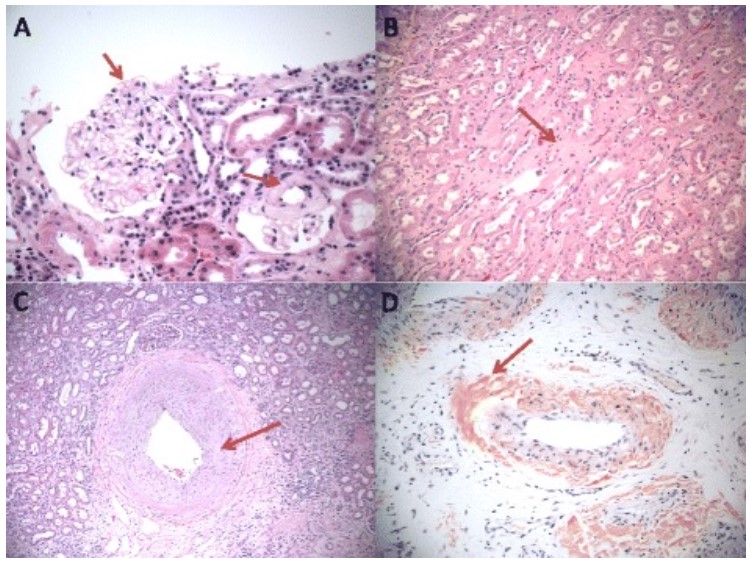Playlist
Show Playlist
Hide Playlist
Renal Case: 32-year-old Woman with Abrupt Onset of Edema
-
Slides Nephrotic Syndromes.pdf
-
Reference List Nephrology.pdf
-
Download Lecture Overview
00:01 Let's move onto another clinical case. 00:04 You have a 32 year old woman who presents with abrupt onset of lower extremity edema and weight gain over the past three weeks. 00:11 Her serum creatinine is normal at 0.78 milligrams per deciliter. 00:15 Her albumin is low at 1.8 grams per deciliter and our urine analysis shows 4+ protein on the dipstick, nocellular elements, no white blood cells are red blood cells by microscopy, but she has 16 grams of protein estimated on a spot protein to creatinine ratio. 00:31 She notes and questioning her further that she's been taking very high dose ibuprofen over the past three months because she had a back injury and has had some muscle pains. 00:40 So the question is what is the most likely etiology of her nephrotic syndrome? So let's go through our clinical history to see if we have some clues. 00:52 One thing that I think stands out in the history is that she really developed this onset of lower extremity edema relatively abruptly. 01:00 It's not insidious as it may happen in our former disease like membranous. 01:03 This is something that she could actually recall. 01:05 Hey three weeks ago, I developed this edema. 01:08 So it's very suggestive of certain types of nephrotic syndromes. 01:12 She's also profoundly hypoalbuminemic. 01:14 She's at 1.8 grams per deciliter and she has very high grade proteinuria. 01:18 She also has very interestingly a temporal correlation with ibuprofen use and the onset of her nephrotic syndrome. 01:26 So taken together. 01:27 This is very very suggestive of minimal change disease.
About the Lecture
The lecture Renal Case: 32-year-old Woman with Abrupt Onset of Edema by Amy Sussman, MD is from the course Nephrotic Syndrome.
Included Quiz Questions
Which of the following is commonly associated with minimal change disease?
- Rapid onset
- Hematuria
- Weight loss
- Aggravation by glucocorticoid use
Customer reviews
5,0 of 5 stars
| 5 Stars |
|
1 |
| 4 Stars |
|
0 |
| 3 Stars |
|
0 |
| 2 Stars |
|
0 |
| 1 Star |
|
0 |
yyyyyyyyyyyyyyyy cccccccc ccccccc ccc ccccc cccccccccc cccccccccc cc cc cc cc cc





